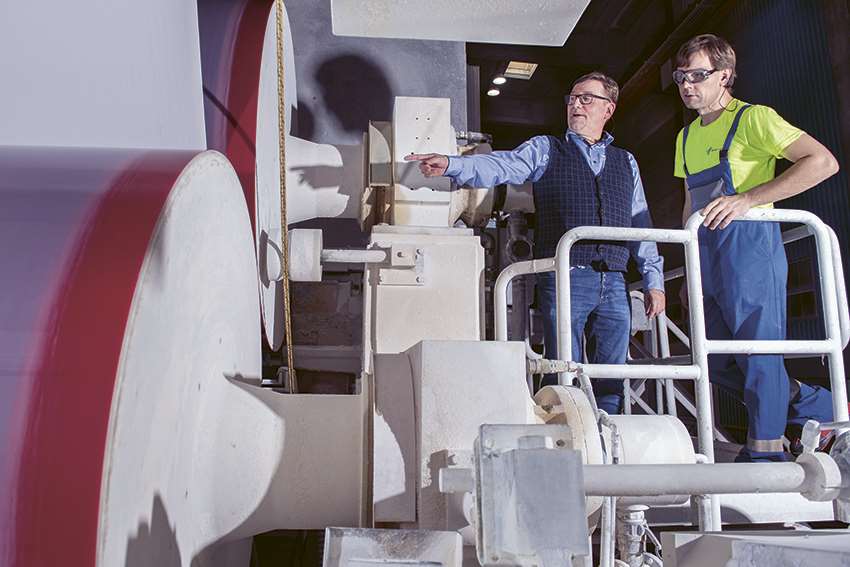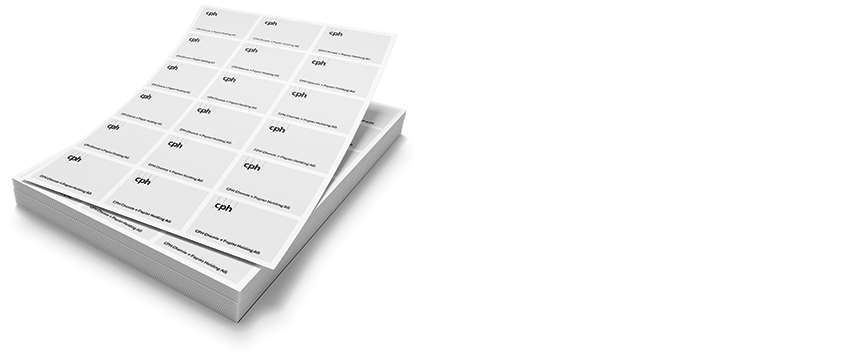Success story Paper
Label backing papers from waste paper and waste wood

Dr. Jens Besser, Perlen Papier’s Head of Technology & Development (left) and David Faust, PM 4 paper machine technician
As a more ecofriendly alternative to the pulp which is generally used to make the backing strips for adhesive labels, Perlen Papier is developing a backing paper that is based on waste paper and waste wood. The new product can help suppliers of such release liners to reduce their carbon footprint.
Labels offer a practical means of marking letters, parcels and many other objects: just peel it off and stick it on. But if the label is to separate freely from its backing strip, this strip or ‘release liner’ must fulfil some demanding requirements. Paper and polyethylene are the most important release liners. While polyethylene is most commonly used in the USA, around three quarters of Europe’s release liners are made of paper. Papers of various qualities are used for this, with clay-coated kraft or CCK a particularly widespread choice. CCK is a coated paper of the kind which is also produced in Perlen for use in magazines. For release liner applications, the finished CCK is given a further coating of silicone to ensure that, despite its adhesive, the label is still easily separable from its backing.
The backing papers used as release liners today are based on pulp. But with sustainability aspirations continuing to rise both within the industry and among its customers, the makers of such release liners are increasingly seeking more ecofriendly alternatives. “The coated papers which are manufactured in Perlen are a pure recycling product made from recovered paper and waste wood, and make excellent label backings,” says Jens Besser, Perlen Papier’s Head of Technology & Development. To meet the specifications for applying an additional silicone coating to the backing papers concerned, numerous adjustments have to be made to the factory’s PM 4 paper machine, particularly in terms of its coating formulation. So further trials have already been planned. “We’re in close contact with a partner company in the siliconization sector which is giving us a lot of support in developing our product and bringing it to market,” Jens Besser adds.
The new and more sustainably produced backing papers will enable the suppliers of release liners to substantially reduce their carbon footprint compared to the footprint they would generate using standard backing paper products.

